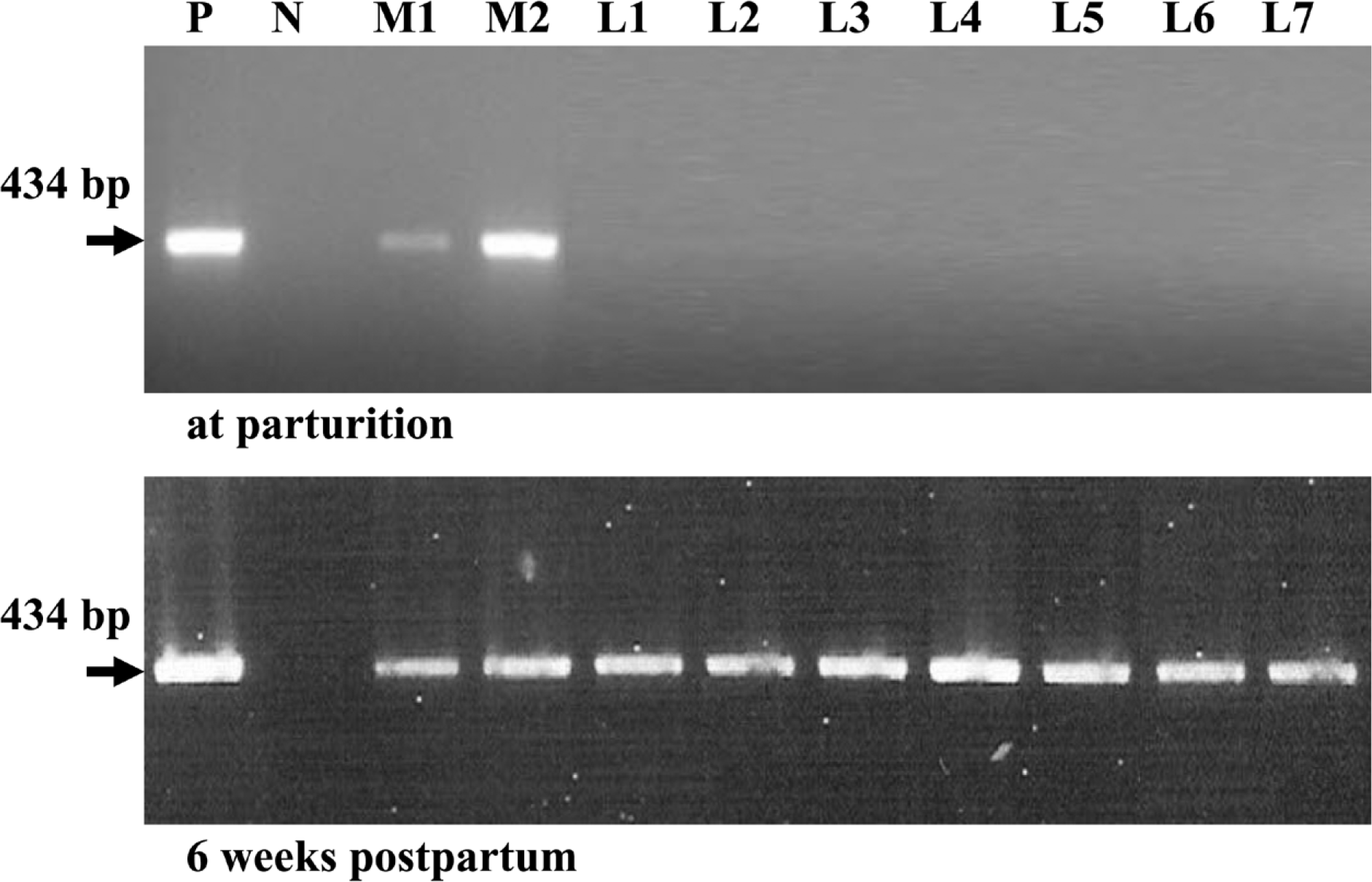Abstract
In this study we investigated maternal Helicobacter felis (H. felis) infection status to determine the potential of maternal transmission. Pregnant Beagle dogs were infected experimentally with H. felis. Following the experimental design, the stools of the mother and litters were isolated and assessed for transmission of H. felis at parturition day, 1-week old age and 6-week old age respectively. Polymerase chain reaction (PCR) was used to examine the presence of transmitted H. felis. All litters showed no transmission of H. felis at parturition day. However, they revealed 14.3 % and 100 % at 1-week old age and 6-week old age respectively by PCR. These results suggested that vertical infection during prenatal period or delivery procedure is unlikely as a route of mother-to-child H. felis infection. It might be acquired H. felis through breastfeeding, contaminating saliva and fecal-oral during co-habitat.
REFERENCES
Baele M.., Van den Bulck K.., Decostere A.., Vandamme P.., Hänninen M.L.., Ducatelle R.., Haesebrouck F.2004. Multiplex PCR assay for differentiation of Helicobacter felis, H. bizzozeronii, and H. salomonis. J. Clin. Microbiol. 42(3):1115–1122.
De Bock M.., Decostere A.., Hellemans A.., Haesebrouck F.., Ducatelle R.2006. Helicobacter felis and Helicobacter bizzozeronii induce gastric parietal cell loss in Mongolian gerbils. Microbes Infect. 8(2):503–510.

Kim S.H.., Kim O.2004. Application of Consensus Polymerase Chain Reaction for Monitoring of Helicobacter Species. Lab. Anim. Res. 20(4):316–320.
Kim S.K.., Cho S.J.., Kim O.2006. Detection and identification of secreting Helicobacter species from cats. Lab. Anim. Res. 22(3):243–247.
Lee H.A.., Park Y.S.., Kim O.2007. Prevalence of Helicobacter Species in Feces of Dogs. Lab. Anim. Res. 23(3):339–344.
Oh H.G.., Kim Y.., Lee H.A.., Kim O.2009. Detection of Helicobacter heilmannii infection in a cat. Lab. Anim. Res. 25(4):385–391.
Rothenbacher D.., Inceoglu J.., Bode G.1999. Helicobacter pylori among preschool children and their parents: evidence of parent-child transmission. J. Infect. Dis. 179(2):398–402.
Rothenbacher D.., Inceoglu J.., Bode G.2000. Acquisition of Helicobacter pylori infection in a high-risk population occurs within the first 2 years of life. J. Pediat. 136(6):744–748.

Figure 1.
Result of Helicobacter felis specific polymerase chain reaction with the fecal samples. P, positive control; N, negative control; M1, mother 1; M2, mother 2; L1~L7, litter 1~litter 7. On parturition day, there was no positive reaction in litters, while 6 weeks postpartum, all litters showed positive reaction.

Table 1.
Results of polymerase chain reaction for assessment of transmission of Helicobacter felis




 PDF
PDF ePub
ePub Citation
Citation Print
Print


 XML Download
XML Download